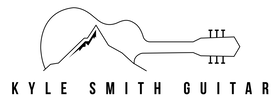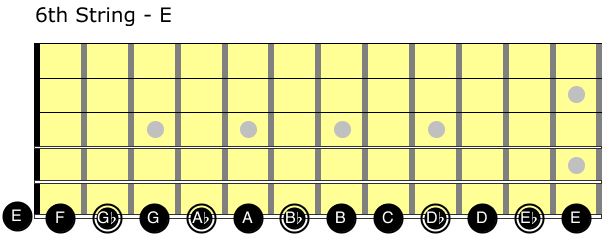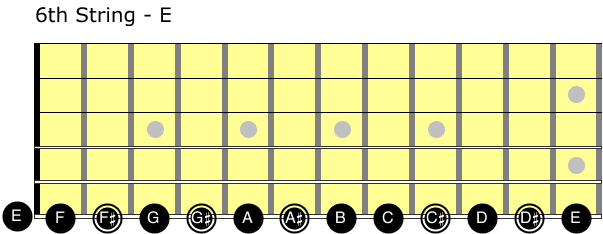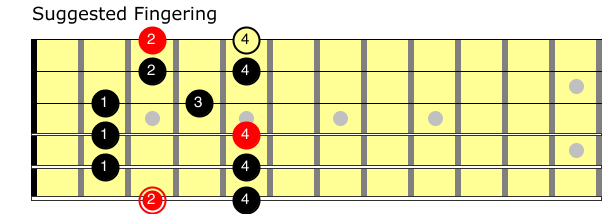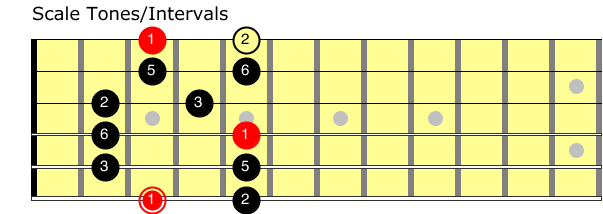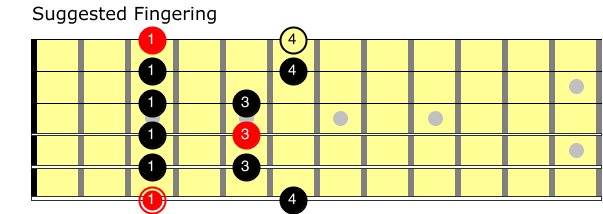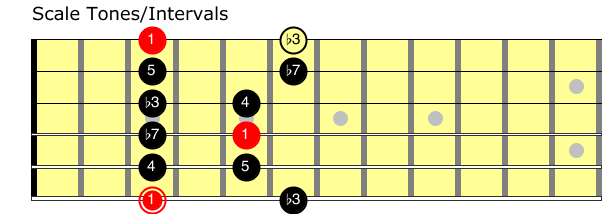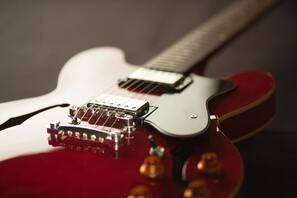 Imagine being able to play a great sounding solo next time you’re jamming with another guitar player, or playing along with a backing track. Believe it or not, you don’t need to study advanced improvisation techniques to get going. You just need to learn one or two simple scales, and you’re ready to get started! For a guitar player, pentatonic scales are an important tool you need to have at your disposal. In almost any style of music you want to play, major and minor pentatonic scales are going to be your go-to scale pattern for improvisation and playing guitar solos. Learning your major and minor pentatonic scales will give you the tools necessary to improvise in both major and minor keys with confidence - whether you are jamming with your friends or taking a solo in jazz band. A solid foundation with your major and minor pentatonic scales will also make it easier for you to learn other scale forms later on - like major and natural minor scales. In this lesson you will learn how to play the major and minor pentatonic scales starting on the 6th string. We will look at suggested finger patterns and learn the scale tone numbers for both of these scales. You will also start to see how you can move these scale patterns around the neck, so you can improvise in any major or minor key with confidence. What Is A Pentatonic Scale?A pentatonic scale is a sequence of 5 notes in a given key, and is found in a wide variety of cultures and musical styles. The two most common pentatonic scales for you to need to know are major and minor. Why Should You Learn Your Pentatonic Scales?There are a couple of practical reasons you should be learning your pentatonic scales - I’ll give you two examples: Example 1: Most of the time, a major or minor pentatonic scale is going to be a safe choice for you when playing a guitar solo, regardless of your style of music. As long as you’re playing in the right key, you should sound just fine! Example 2: From a mechanical perspective, the pentatonic scale forms the skeleton of your major and natural minor scale shapes. If you know your pentatonic scales, it’s pretty simple to expand into major scales from the major pentatonic scale, and natural minor scales from the minor pentatonic scale. Movable Scale ShapesThese scale patterns are movable, so if you learn the note names along the 6th string, you can play in any major or minor key. Natural and flat notes on the 6th string:Natural and sharp notes on the 6th string:To play your pentatonic scale in the key of G, start your scale on the note G. 6th string, 3rd fret. To play your pentatonic scale in the key of C, start your scale on the note C. 6th string, 8th fret. You can play in any key you need to play in by changing the starting note of your scale pattern. What Are Scale Tones?Scale tones are numbers assigned to each note of a scale. In classical music theory these are labeled using roman numerals (I, II, etc), but for our purposes we’ll use arabic numerals (1, 2, 3, etc). These are usually more familiar to people so there’s less you have to think about as you practice. These tones are commonly used to describe intervals, melodic sequences, and chord progressions - they give you a reference point to gain a deeper understanding of what is going on in music. By learning and understanding your scale tones for each scale, you will be able to understand more complicated music theory concepts later on. Saying your scale tones out loud as you play will also help improve your ear, and make it easier for you to play melodies you hear on recordings or in your own head. Get in the habit of saying or singing your scale tones to yourself as you practice. It will make things much easier for you as you get better. The ScalesMajor Pentatonic Scale - 6th String Form
Major Pentatonic Scale TonesThe major pentatonic scale uses the following scale tones: 1 (root), 2, 3, 5, and 6 The numbers tell you how far away from the root a note is. 1 is the root, each larger number is farther above the root. Once you’re comfortable playing the major pentatonic scale, try saying the scale tones out loud as you practice. This will help you start to connect your ears with your fingers, making it easier to play melodies in major keys that you hear on recordings, or in your own head. Minor Pentatonic Scale - 6th String Form
Minor Pentatonic Scale TonesThe minor pentatonic scale uses the following scale tones: 1 (root), b3, 4, 5, and b7 The numbers tell you how far away from the root a note is. 1 is the root, each larger number is farther above the root. Once you’re comfortable playing the minor pentatonic scale, try saying the scale tones out loud as you practice. Start out by saying the flat before the b3 and the b7 - eventually you will memorize the fact that the minor pentatonic scale has a flat 3rd and a flat 7th. This will help you start to connect your ears with your fingers, making it easier to play melodies in minor keys that you hear on recordings, or in your own head. Things To Think AboutPentatonic Scales are an important tool for improvising guitar solos on guitar, and they are a foundational technique that will make other skills easier to learn down the line. Take your time and make sure you get the right finger pattern for both of these scales. Saying the scale tones out loud as you practice will help you start to develop your ear in connection with these scale patterns, and make it easier to learn melodies you hear on recordings, or in your head. These scales are movable, so if you learn the note names on the 6th string, you can play in any major or minor key. Keep practicing, and if you need help feel free to contact me. I’m always happy to answer questions and help people out! Guitar Lessons Can Help You Learn FasterWhen you're learning guitar, having an experienced teacher can help you learn the music you really want to be able to play.
In your guitar lessons, I'll take you straight to the skills that are going to help you the most - and get you playing the way you want to play. Click the links for more information about: If you have any questions or want help signing up, contact me today.
0 Comments
Your comment will be posted after it is approved.
Leave a Reply. |
